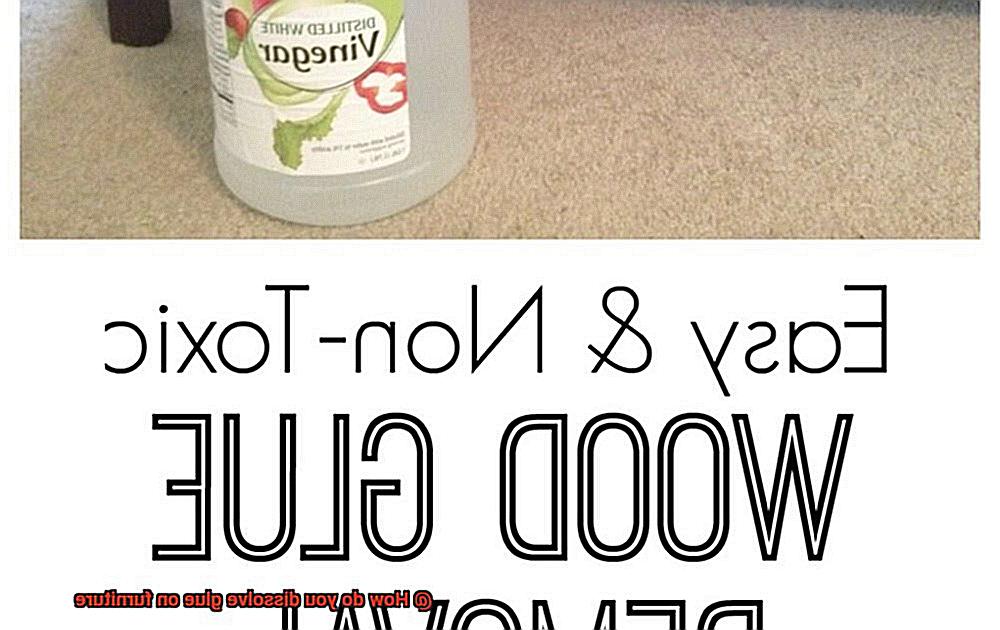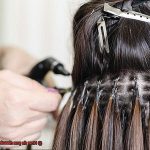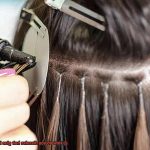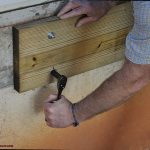Are you tired of staring at that pesky glue residue on your furniture, ruining its flawless beauty? Well, fret no more. In this blog post, we’ll dive into some tried-and-true methods to dissolve glue on furniture and bring back its original charm. So, grab your tools and let’s get started.
Heat:>
When it comes to tackling stubborn glue, heat is your secret weapon. Grab a hairdryer or a heat gun and set it on low. Direct the warm breeze towards the glue and watch it soften like butter. Then, with a trusty plastic scraper or an old credit card, gently scrape away the gooey mess. Remember not to go overboard with the heat – we don’t want any accidental damage.
>Solvents:
Solvents – the superheroes of adhesive removal. Acetone is one such champion found in many nail polish removers. Take a clean cloth, dab some acetone onto it, and give that stubborn glue a good rubdown until it starts to surrender. But wait. Always test the solvent on an inconspicuous area first to ensure it won’t wreak havoc on your furniture finish.
Citrus-based Cleaners:
Get ready for a zesty solution. Citrus-based cleaners containing d-limonene have proven their worth in dissolving certain types of glue. Grab that citrus-infused wonder liquid and apply it generously onto a cloth. With gentle strokes, coax the sticky residue into submission until it softens up nicely. Then wipe away the remnants with a clean damp cloth.
White Vinegar:
Who knew vinegar could do more than just spice up your salad dressing? It turns out white vinegar can also be a savior when dealing with unruly glue situations. Soak a cloth in this magical elixir and let it rest on the glue for a few minutes. As the vinegar works its magic, the adhesive will loosen up. Now, grab that trusty plastic scraper or credit card and gently scrape away the softened goo.
WD-40 or Goo Gone:
Time to bring in the big guns – WD-40 or Goo Gone. These specialized products are like secret agents that infiltrate and dissolve glue with ease. Apply a small amount to the affected area, allowing it some time to penetrate the adhesive. After a few minutes of suspense, grab
What is Glue and How Does it Work?
Contents
- 1 What is Glue and How Does it Work?
- 2 Different Types of Glue and Their Applications
- 3 Heat Method for Dissolving Glue on Furniture
- 4 Solvent or Adhesive Remover Method for Dissolving Glue on Furniture
- 5 Water-Based Glue Method for Dissolving Glue on Furniture
- 6 Mechanical Methods for Dissolving Glue on Furniture
- 7 Important Precautions to Take When Dissolving Glue on Furniture
- 8 Conclusion
Glue – a seemingly simple substance that possesses remarkable adhesive properties. From woodworking projects to household repairs, glue plays a vital role in various industries. In this article, we will delve into the world of glue, exploring its different types and the science behind how it works. Additionally, we will provide valuable tips on safely removing glue from furniture surfaces. Prepare to be amazed.
Types of Glue and Their Remarkable Bonding Mechanisms:
Wood Glue or PVA (Polyvinyl Acetate) Glue:
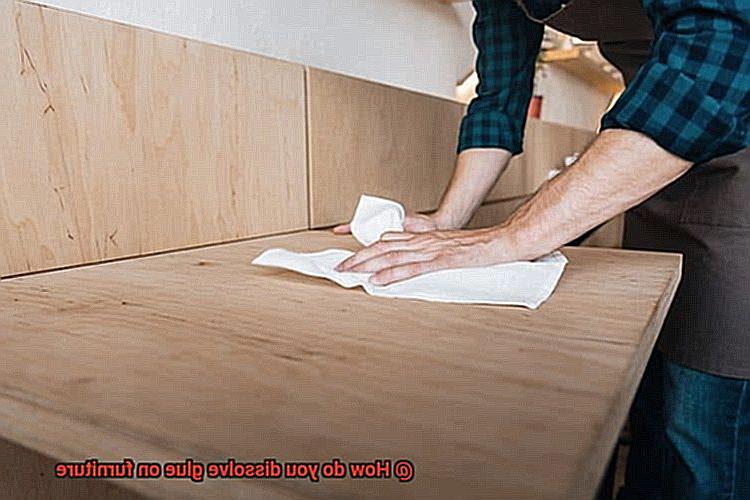
- This glue works wonders by penetrating porous surfaces and bonding with the fibers within the materials.
- Its exceptional strength and durability make it an ideal choice for woodworking projects.
Super Glue or Cyanoacrylate Adhesive:
- Witness the magic as this glue undergoes polymerization when exposed to moisture.
- Within seconds, it forms an instant, unbreakable bond between surfaces.
Hot Glue or Thermoplastic Adhesive:
- Solid in form, this glue transforms into a malleable state when heated using a hot glue gun.
- As it cools down and solidifies, it bonds surfaces quickly and securely.
Mastering the Art of Removing Glue from Furniture:
Heat Method:
- Gently unleash the power of heat using a hairdryer or heat gun to soften the glue.
- Remember to exercise caution and avoid excessive heat that may damage the furniture surface.
Solvents or Adhesive Removers:
- Choose a solvent specifically designed for the material of your furniture.
- Before applying it to the glued area, perform a small test on an inconspicuous spot.
Warm Soapy Water:
- Create a soothing concoction by mixing warm water with gentle dish soap.
- With a gentle scrub, bid farewell to the glue residue, rinse with clean water, and dry thoroughly.
Mechanical Methods:
- Unleash your inner artist with a scraper or putty knife, carefully scraping away stubborn glue.
- Exercise precision and care to avoid scratching or gouging the furniture surface.
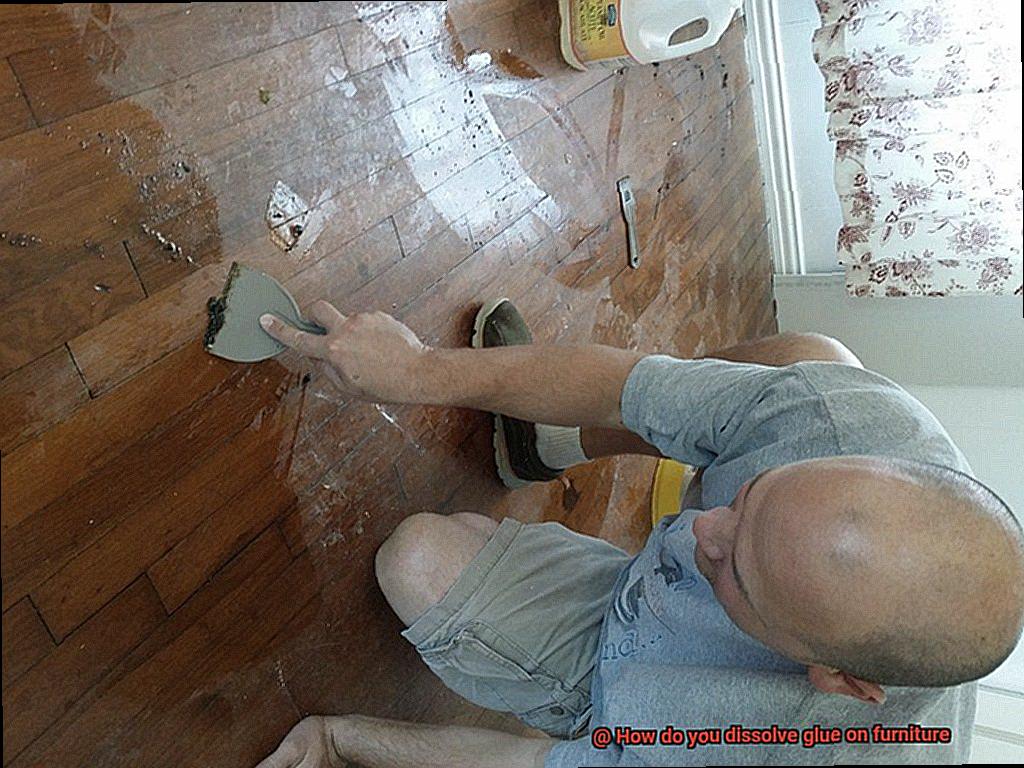
Different Types of Glue and Their Applications
When it comes to removing glue from furniture, it’s crucial to understand the different types of glue and their corresponding removal methods. Using the wrong technique or solvent can potentially damage your beloved furniture. Let’s explore some tried-and-tested methods for dissolving glue on furniture surfaces.
Wood Glue:
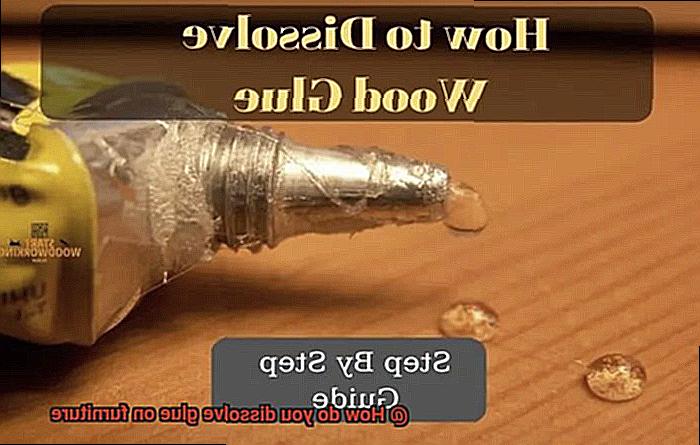
Wood glue is notorious for its strong bond and resistance to moisture and heat. To dissolve wood glue, apply heat using a hairdryer or heat gun, making the glue more pliable. Gently scrape off the softened glue with a putty knife or scraper. If the glue persists, consider using solvents like acetone or rubbing alcohol. Always test solvents on an inconspicuous area before applying them to the entire surface.
Super Glue:
Super glue is a fast-setting adhesive that bonds quickly and strongly. To remove super glue, exercise caution as acetone can damage certain furniture finishes. Apply a small amount of acetone or nail polish remover to a cotton ball and gently dab the glued area. The super glue should start dissolving, allowing you to peel it off.
Epoxy Resin:
Epoxy resin is known for its exceptional strength and durability. Removing epoxy resin may require more effort. Start by scraping off excess resin using a scraper or putty knife. Sanding the remaining residue can help smoothen the surface. If necessary, consult professionals for specialized epoxy removal products.
Contact Cement:
Contact cement is commonly used for laminating surfaces. To remove contact cement, use solvents such as acetone or mineral spirits. Apply the solvent to a cloth and gently rub the glued area until the contact cement loosens. Be careful not to oversaturate the surface with the solvent.
Hot Glue:
Hot glue is a versatile adhesive used in crafts and DIY projects. To remove hot glue, apply heat using a hairdryer until the glue softens. Carefully peel off the glue, ensuring not to damage the furniture surface. If residue remains, use rubbing alcohol on a cloth to gently remove it.
Heat Method for Dissolving Glue on Furniture
Fear not. I have the perfect solution for you – the heat method for dissolving glue on furniture. This technique uses heat to soften the glue, making it easier to remove without causing damage. Let’s delve into the details.
There are a few ways to apply heat and dissolve the glue. One option is using a hairdryer or heat gun. Set it to a low or medium heat setting and hold it a few inches away from the glue. In a sweeping motion, move it back and forth, allowing the heat to gradually soften the glue. Once softened, scrape it off with a plastic scraper or credit card.
Another method involves using an iron. Set it to a low or medium heat setting and place a cloth or towel over the glue. Gently press the iron onto the cloth-covered glue for a few seconds. The heat will transfer through the cloth, softening the glue. Then, scrape it off with a plastic scraper.
Now, let’s talk safety precautions. It’s crucial to be cautious when using heat on furniture. Here are some tips:
Avoid excessive heat that could damage the furniture’s surface or finish.
Always test a small, inconspicuous area first to ensure the heat method won’t cause damage.
Work in a well-ventilated area due to potential fumes from the glue.
Use protective gloves and safety glasses for your own safety.
It’s important to note that the heat method works best for certain types of glue, such as hot glue or adhesive residue from stickers or labels. Stronger adhesives like epoxy or super glue may require additional techniques or solvents for removal.
After removing the softened glue, remember to clean the furniture surface thoroughly. Use a mild soap and water solution or specialized furniture cleaner to wipe down the area.
Solvent or Adhesive Remover Method for Dissolving Glue on Furniture
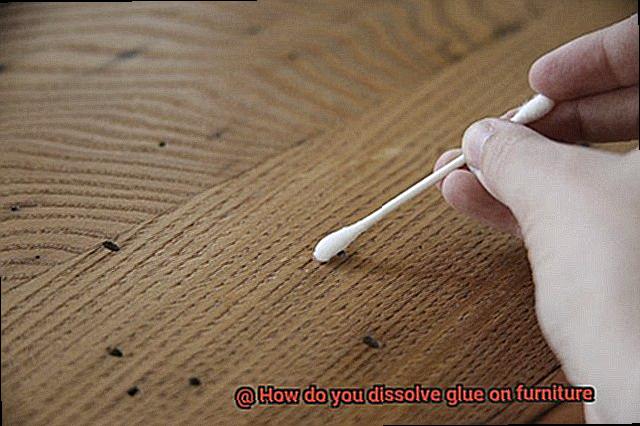
Glue on furniture can be a sticky situation, but fear not. We have the perfect solution to dissolve that pesky adhesive. Solvents and adhesive removers are the heroes of this tale, designed to break down glue without harming your precious furniture. So, let’s dive into the world of solvents and adhesive removers and unlock the secrets to successful glue removal.
Choosing the Right Product:
Different glues require different solvents or adhesive removers. Before embarking on your glue-dissolving mission, ensure you select the appropriate product for the type of glue you’re dealing with. Read the labels carefully or seek professional advice to make an informed choice.
Testing, Testing, 1, 2, 3:
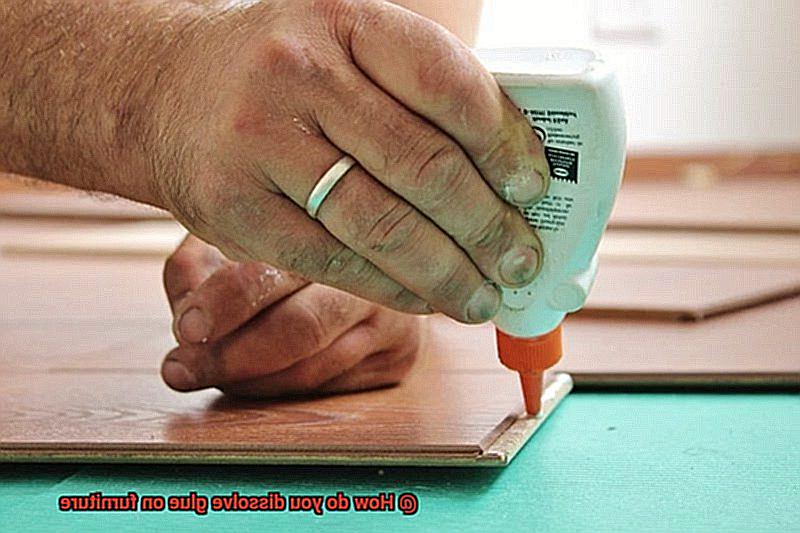
Perform a spot test on a small, inconspicuous area before applying any solvent or adhesive remover to your furniture. This step ensures that the product won’t cause any damage or discoloration, especially for delicate or antique furniture.
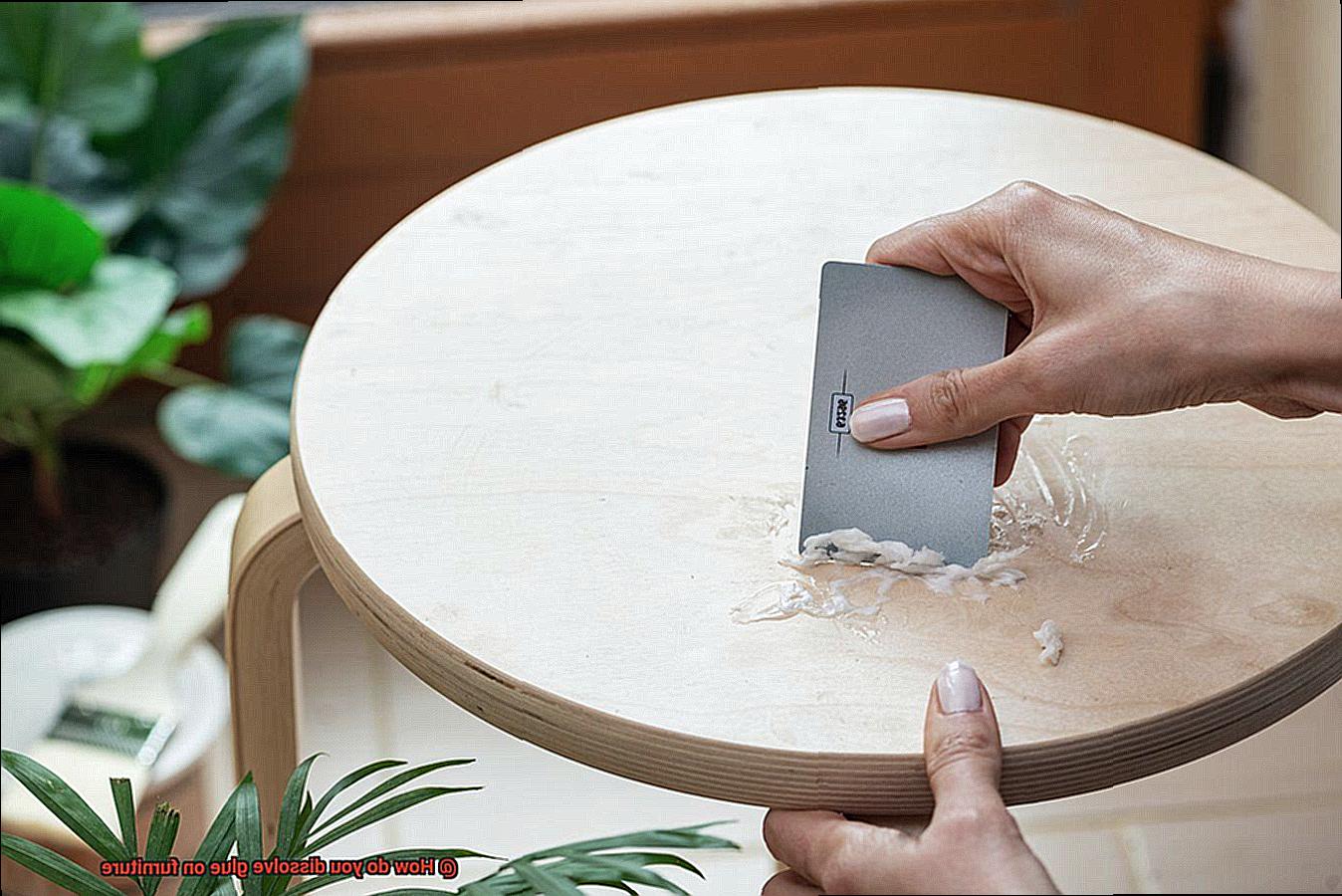
Application and Removal:
Apply a small amount of solvent or adhesive remover directly onto the glue and let it sit for a few minutes. Allow the product to penetrate and dissolve the adhesive. Avoid aggressive scrubbing or rubbing to prevent harm to the furniture’s finish.
When the glue has softened, gently scrape it off using a plastic scraper or a soft cloth. Be careful not to scratch or gouge the furniture’s surface while removing the glue. Patience is key – if stubborn glue remains, repeat the process until victory is achieved.
Post-Glue Removal Care:
After removing most of the glue, clean the area with a mild soap and water solution to eliminate any residue from the solvent or adhesive remover. Thoroughly dry the furniture before applying any additional treatments or finishes.
Safety First:
Always follow the manufacturer’s instructions when using solvents or adhesive removers. Some products may require ventilation or protective gear, so read and adhere to all safety precautions. Remember, prevention is better than cure – try to avoid spills or accidents with glue in the first place.
Water-Based Glue Method for Dissolving Glue on Furniture
Glue mishaps are an unfortunate reality when it comes to furniture projects. Whether you’re refinishing a beloved piece or repairing a cherished heirloom, removing water-based glue can be a daunting task. However, fear not. In this blog post, we will explore the water-based glue method for dissolving glue on furniture. So grab your supplies and let’s get started.
The Water-Based Glue Method:
- Gather your supplies: To dissolve stubborn glue on your furniture, you’ll need warm water, mild soap, a clean cloth or sponge, and a plastic scraper.
- Create a soapy solution: Wet your cloth or sponge with warm water and add a small amount of mild soap. Gently mix the ingredients until you have a soapy solution ready for action.
- Gently rub away the glue: Take your soapy cloth or sponge and gently rub it over the glue-covered area on the furniture. The warmth of the water will help soften the glue, while the mild soap breaks down its adhesive properties.
- Scrape away the softened glue: As you continue rubbing, you may notice the glue becoming more malleable. Use a plastic scraper or your fingers (carefully.) to scrape away the softened glue from the surface of the furniture.
- Rinse and dry: If necessary, repeat steps 3 and 4 until all traces of glue have been removed. Once done, rinse the area with clean water and wipe it dry with a soft cloth.
Important Considerations:
- Test on a small area first: Before diving headfirst into removing glue from your furniture, test this method on a small, inconspicuous area to ensure it doesn’t cause any damage or discoloration.
- Not suitable for all glues: Keep in mind that this method may not work for all types of water-based glues, especially those that have cured for an extended period. In such cases, alternative methods or professional assistance may be required.
Mechanical Methods for Dissolving Glue on Furniture
Don’t worry, we’ve got you covered. Let’s dive into the world of mechanical methods for dissolving glue on furniture and restore your pieces to their former glory.
One effective method involves using heat to soften the glue. Simply grab a heat gun or hairdryer and apply direct heat to the glue for a few minutes. As the glue becomes pliable, carefully scrape it off with a plastic scraper or putty knife. Take your time and be gentle to avoid damaging the surface of your furniture.
For those tough-to-remove glues, sanding is the way to go. Get your hands on some sandpaper or an abrasive pad and start sanding away at the glue. Begin with a coarse-grit sandpaper and gradually work your way up to finer grits until the glue is completely gone. It may take some time and effort, especially for larger areas with a significant amount of glue, but the end result will be worth it.
Power tools enthusiasts, rejoice. A power sander can be your best friend in this battle against stubborn glue. This electric tool will quickly and efficiently remove the glue from your furniture surface. However, exercise caution and avoid applying too much pressure or staying in one spot for too long, as it may cause damage.
If you’re dealing with dried or hardened glue, a chisel or scraper might just save the day. Carefully slide the chisel or scraper under the glue and gently pry it off the surface. Patience and precision are key here to avoid any scratches or gouges on your furniture.
Don’t forget about safety. Always wear protective gear such as gloves and safety goggles when using these mechanical methods to dissolve glue. It’s also a good idea to test the method on a small, inconspicuous area of the furniture before proceeding to ensure it won’t cause any damage.
Important Precautions to Take When Dissolving Glue on Furniture
Restoring furniture can be an immensely satisfying endeavor, but it is crucial to exercise caution when dissolving glue in order to protect and preserve your cherished pieces. This article explores the essential steps and precautions required to safely dissolve glue on furniture, ensuring a successful restoration process.
Wear Protective Gloves:
When working with glue dissolvers, it is imperative to safeguard your hands by wearing protective gloves. Many glue dissolvers contain chemicals that can be harmful to the skin, making gloves an essential safety measure.
Work in a Well-Ventilated Area:
Certain glue dissolvers emit potent fumes that can be hazardous if inhaled over an extended period. To combat this, it is imperative to work in a well-ventilated area or employ fans and open windows to enhance air circulation and minimize exposure to these chemicals.
Test on an Inconspicuous Area:
Before applying any glue dissolver, it is vital to conduct a test on a small, inconspicuous area of the furniture. Different types of glue and furniture finishes may react differently to the dissolver, necessitating a test to prevent any potential damage or discoloration.
Use Soft Cloth or Sponge Instead of Brushes:
To avoid inadvertent scratching or damaging the furniture surface, it is advisable to utilize a soft cloth or sponge when applying the glue dissolver. This ensures gentle yet effective removal of the adhesive residue without compromising the integrity of the furniture.
Follow Instructions Diligently:
Each glue dissolver product has its unique set of application instructions and dwell time requirements. It is pivotal to read and adhere to these instructions meticulously to maximize effectiveness without causing any harm to the furniture.
Thoroughly Clean the Furniture:
After successfully dissolving the glue, it is important to thoroughly clean the furniture. Utilize a mild soap and water solution to remove any residue from the dissolver, ensuring the complete eradication of all traces of glue.
Apply a Protective Finish or Wax:
To restore and safeguard the furniture, it is highly recommended to apply a protective finish or wax after removing the glue. This step repairs any damaged areas and provides an additional layer of defense against future spills or stains.
Bg4yLeiCsOc” >
Also Read: How To Remove Glue From Furniture?
Conclusion
In conclusion, dissolving glue on furniture can be achieved through a variety of effective methods. Harnessing the power of heat can work wonders, as it softens the adhesive and allows for easy removal using a plastic scraper or credit card. Alternatively, solvents like acetone, citrus-based cleaners, white vinegar, WD-40, or Goo Gone can break down those stubborn bonds.
Before diving in headfirst, it’s crucial to test any solvent on an inconspicuous area to ensure it won’t harm the furniture’s finish. Understanding the different types of glue and their bonding mechanisms is also key. Wood glue or PVA glue can bow down to heat or solvents, while super glue surrenders to acetone or nail polish remover. Epoxy resin might require some scraping and sanding action, whereas contact cement takes a knee when faced with acetone or mineral spirits. Hot glue? It simply melts under the influence of heat and peels away like a bad dream.
If all else fails and the glue refuses to budge, mechanical methods come into play. Sanding with fervor using a power sander, employing a chisel with precision, or wielding a scraper with determination can chip away at that stubborn adhesive.
But remember: safety first. Don your protective gloves and work in a well-ventilated area. Test your chosen method on an inconspicuous spot before going all-in. Follow instructions diligently like a seasoned pro. Once you’ve successfully bid farewell to the sticky mess, give your furniture some TLC by thoroughly cleaning it and applying a protective finish or wax to restore its former glory.

